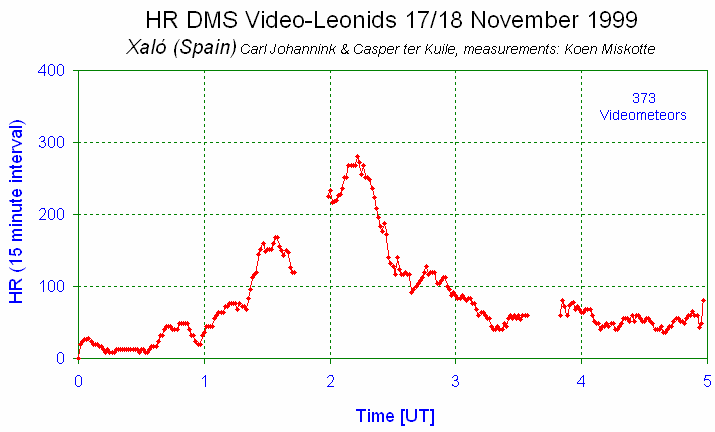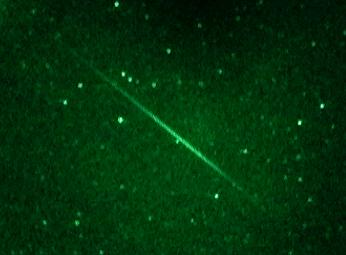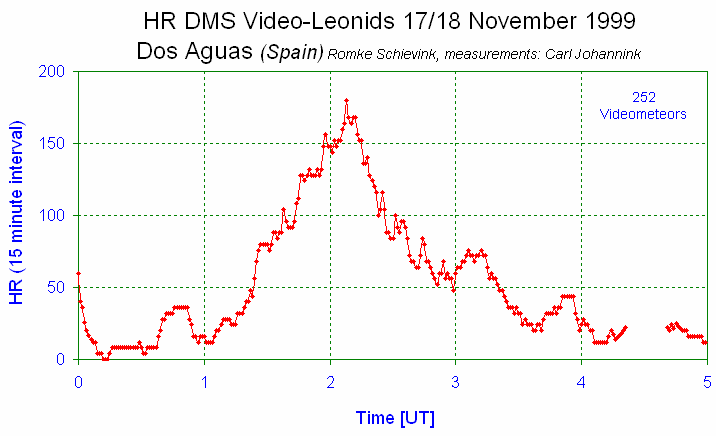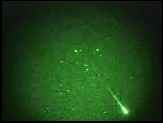|
1. Station "Xaló" (Marc de Lignie and Casper ter Kuile) 2. Station "Dos Aguas" (Romke Schievink) |
| Multistation videosystem station Xaló - Spain | |||
|---|---|---|---|
| Aimingpoint at 23:00 UT RA: 1h45m DC: 61° | |||
| Start and stop times [UT] (November 17/18, 1999) | |||
| Tapeno. | Start [hh:mm] | Stop [hh:mm] | Duration [min] |
| 1 | 23:06 | 00:36 | 90 |
| 2 | 00:38 | 01:44 | 66 |
| 3 | 01:58 | 03:32 | 94 |
| 4 | 03:49 | 05:22 | 93 |


This Leonid meteor appeared in the midst of the storm at 02:03:25 UT.
Equipment: Image intensified video system consisting of an AEG-1400 second generation image intensifier, a Canon 1.2/55 aspherical objective, yielding a field of view of 25 degrees and a digital Panasonic NV-DA1 video camera.
| Multistation videosystem station Dos Aguas - Spain | |||
|---|---|---|---|
| Aimingpoint at 23:00 UT RA: 5h00m DC: 25° | |||
| Start and stop times [UT] (November 17/18, 1999) | |||
| Tapeno. | Start [hh:mm] | Stop [hh:mm] | Duration [min] |
| 1 | 23:02 | 00:05 | 63 |
| 2 | 00:06 | 01:08 | 62 |
| 3 | 01:09 | 02:11 | 62 |
| 4 | 02:12 | 03:14 | 62 |
| 5 | 03:18 | 04:21 | 63 |
| 6 | 04:41 | 05:46 | 65 |

 |
25 Leonids captured by the image intensified videosystem of Romke Schievink at station Dos Aguas, Valencia, Spain. The actual interval lasted for 13 minutes around 2 UT, november 17/18, 1999. This 13 minute interval is compressed into 18 seconds and 25 frames/second. Some meteors will almost not be recognisable because of the high compression rate. The two bright stars at top center are Casper and Pollux. The film is played back at twice the normal speed so meteors move twice as fast. The twinkling of the stars is caused by the strong winds during the recording.